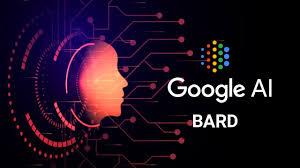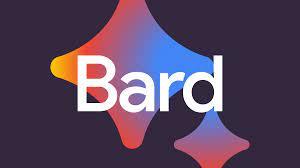Inquire
Google Bard

Title : AI Related to Chat GPT and Bard AI
Google Bard is an experimental, conversational AI chat service developed by Google. It is powered by Google's most advanced large language model (LLM), PaLM 2, and can be used to generate text, translate languages, write different kinds of creative content, and answer your questions in an informative way.
Bard is still under development, but it has learned to perform many kinds of tasks, including:
- Summarizing factual topics
- Writing different kinds of creative content, like poems, code, scripts, musical pieces, email, letters, etc.
- Answering your questions in an informative way, even if they are open ended, challenging, or strange.
- Translating languages
- Generating different creative text formats of text content
Bard is currently available in English, Japanese, and Korean. It can be accessed by signing in with a Google Account.

Here are some examples of what you can do with Google Bard:
- Ask Bard to summarize a factual topic, such as "What is the history of the United States?"
- Ask Bard to write a creative piece of content, such as a poem or a story.
- Ask Bard to answer a challenging question, such as "What is the meaning of life?"
- Ask Bard to translate a text from one language to another.
- Ask Bard to generate different creative text formats of text content.
Artificial Intelligence (AI) refers to the simulation of human intelligence in machines that are programmed to think, learn, and perform tasks that typically require human intelligence. AI systems are designed to analyze data, recognize patterns, make decisions, and adapt to changing circumstances.
There are different types of AI, including:
1. Narrow AI: This refers to AI systems designed for specific tasks and limited domains. Examples include virtual assistants like Siri or Alexa, recommendation algorithms, and image recognition software.
2. General AI: General AI, also known as strong AI or AGI (Artificial General Intelligence), refers to AI systems that can understand, learn, and apply knowledge across a wide range of tasks and domains, similar to human intelligence. General AI does not currently exist, and research is ongoing in this area.
AI can be further categorized into subfields, including:
1. Machine Learning: Machine learning is a subset of AI that focuses on algorithms and statistical models that enable computers to learn and improve from data without explicit programming. It involves training models on large datasets to recognize patterns and make predictions or decisions.
2. Deep Learning: Deep learning is a subfield of machine learning that utilizes neural networks with multiple layers to learn representations of data. It has been successful in tasks such as image and speech recognition.
3. Natural Language Processing (NLP): NLP involves the interaction between computers and human language. It enables machines to understand, interpret, and generate human language, facilitating tasks like speech recognition, machine translation, and sentiment analysis.

AI has numerous applications across various industries, including healthcare, finance, transportation, and entertainment. It has the potential to revolutionize fields such as autonomous vehicles, personalized medicine, fraud detection, and customer service.
Google, being a leading technology company, has heavily invested in AI research and development. It has developed various AI-based products and services, including Google Assistant, Google Translate, Google Photos, and Google's DeepMind, which focuses on advanced AI research.
Please note that the field of AI is rapidly evolving, and new advancements are being made regularly. The information provided here is based on the knowledge available up until September 2021.
Google Bard is an artificial intelligence chatbot that can respond to a user's questions (or prompts) on any subject with an almost human-like "understanding." It performs text-based tasks like creating various forms of content, summarizing text, and translating between languages.

- Managerial Effectiveness!
- Future and Predictions
- Motivatinal / Inspiring
- Other
- Entrepreneurship
- Mentoring & Guidance
- Marketing
- Networking
- HR & Recruiting
- Literature
- Shopping
- Career Management & Advancement


 SkillClick
SkillClick